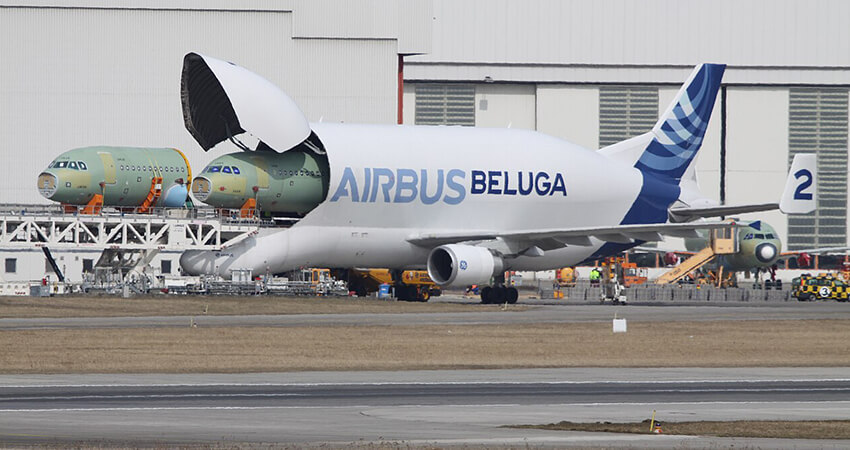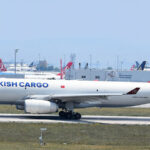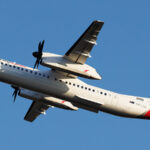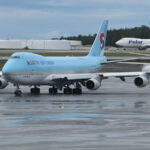Thousands of cargo planes exist worldwide, but the Airbus Beluga and Boeing Dreamlifter stand out due to their peculiar whale-like shape. Their distinctive appearance makes them two of the most unique aircraft in the market, and their uses are equally special.
Although they lack the capacity of industry giants or the maneuverability of the legendary Hercules, their shape and capabilities make them strategic assets for their respective countries and for numerous operations requiring the transportation of large volumes that wouldn’t fit in other types of aircraft.
Airbus Beluga, the First “Whale”
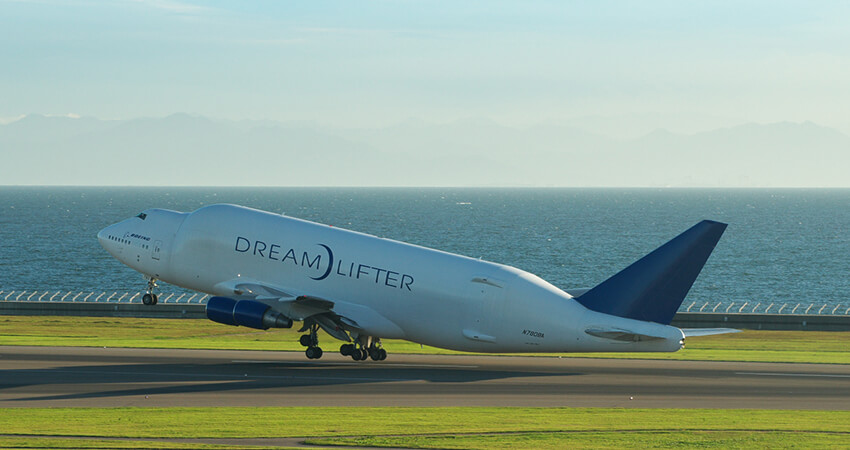
Belly cargo planes, wider and taller than conventional aircraft, had their grand debut with the Airbus Beluga. Introduced in 1995 with a capacity of 47 tons, this aircraft is designed to carry a significant volume of objects, boasting 1,500 m³ of cargo hold space. Throughout its history, it has transported satellites, segments of the International Space Station, locomotives, and helicopters.
One of its most notable features is its unique nose that can be lifted, allowing it to accommodate large-volume cargoes, including parts of smaller aircraft fuselages. Interestingly, its cargo space is larger than that of the Antonov An-124 or the Lockheed C5 Galaxy, although it can carry less weight.
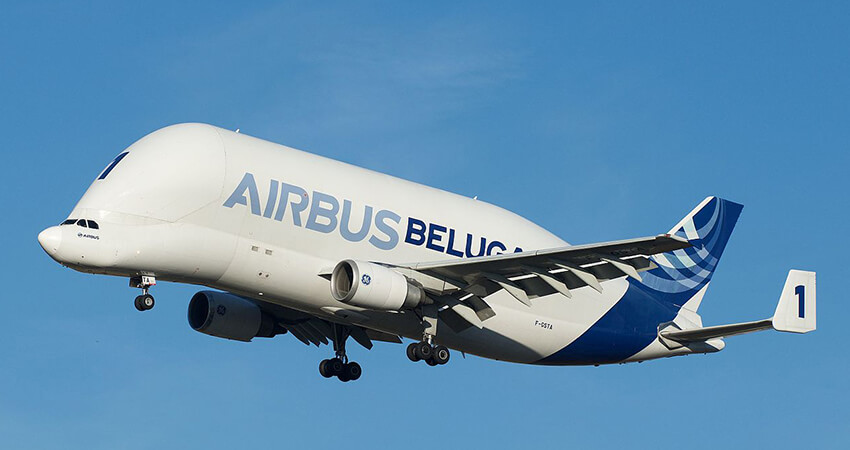
After nearly 30 years, this aircraft received an upgrade, giving rise to the Airbus BelugaXL. While its maximum cargo capacity increased only to 50 tons, it significantly improved cargo volume to 2,300 m³, representing more than a 50% additional capacity.
Five units of the original Beluga aircraft were built, along with six BelugaXLs. In both cases, these aircraft are operated by a division of the manufacturer, Airbus Transport International. Therefore, the company itself determines their usage, often oriented towards strategic projects of the countries that own the company.
Boeing 747-400 Large Cargo Freighter (LCF) or Dreamlifter

Also known as the Dreamlifter, this modification of Boeing’s iconic 747 is one of the most significant in the industry. It boasts tremendous capacity, capable of carrying over 1,800 m³ and around 113 tons, positioning it among the world’s largest aircraft.
Another development in the same family, the Boeing 747-8 Freighter, adds even more capacity, reaching 140 tons. However, its fuselage is conventional, lacking the capability for large-volume cargo.
In both cases, these are modifications made to the legendary Boeing 747, popularly known as the Jumbo. This aircraft, with various versions throughout its history, entered service in 1970 and has served for over 50 years.
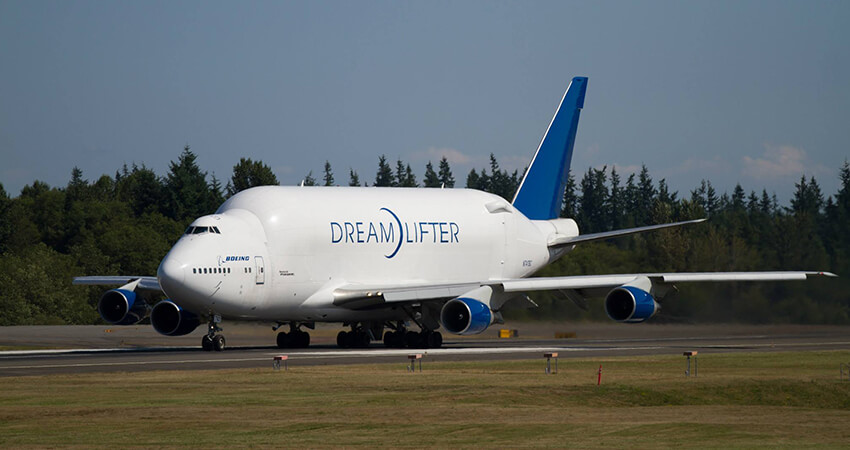
Traditionally known for passenger transport, its substantial size has also made it a significant player in the cargo market. There were even modified models for carrying liquids, such as in-flight refueling fuel. The Dreamlifter, specifically, features a special door at the tail that allows the loading of voluminous cargo. In this case, it’s not the nose that opens but the tail, swinging to one side and enabling the insertion of massive objects.
In total, there are four aircraft of this type, all operated by Boeing for Atlas Air. In all cases, they are modified 747-400s. Scott Carson, Boeing’s President of Commercial Airplanes, jokingly apologized [jokingly apologized] to the original designer of the aircraft for the changes made.
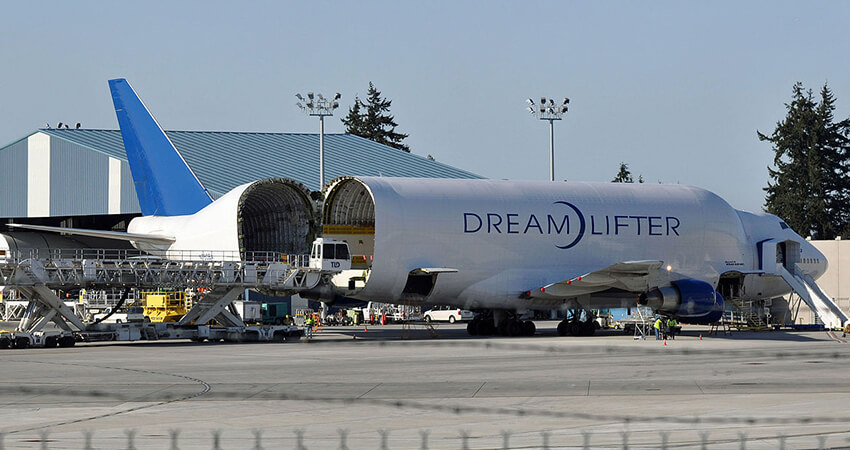
Background
However, these are not the first aircraft with such a distinctive shape. One of the most remembered predecessors is the aircraft that NASA implemented for transporting parts of its space program.
Thus, the Aero Spacelines Pregnant Guppy was born in 1962 and retired in 1979. With a capacity of 826 m³ and 15 tons of cargo, it may seem small compared to current projects, but in its day, it was a pioneer.
The same goes for its successor, the Aero Spacelines Super Guppy. With a cargo volume capacity of a thousand cubic meters and 23 tons, it significantly improved upon its predecessor. This not only led to its participation in important programs like Apollo, which took humans to the Moon, but it still remains operational.
